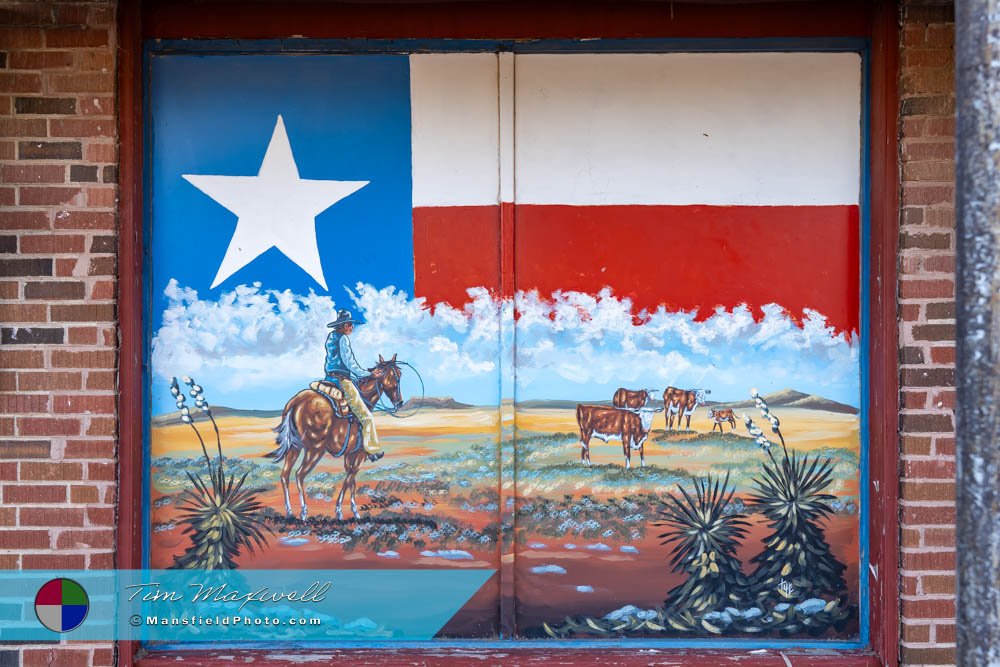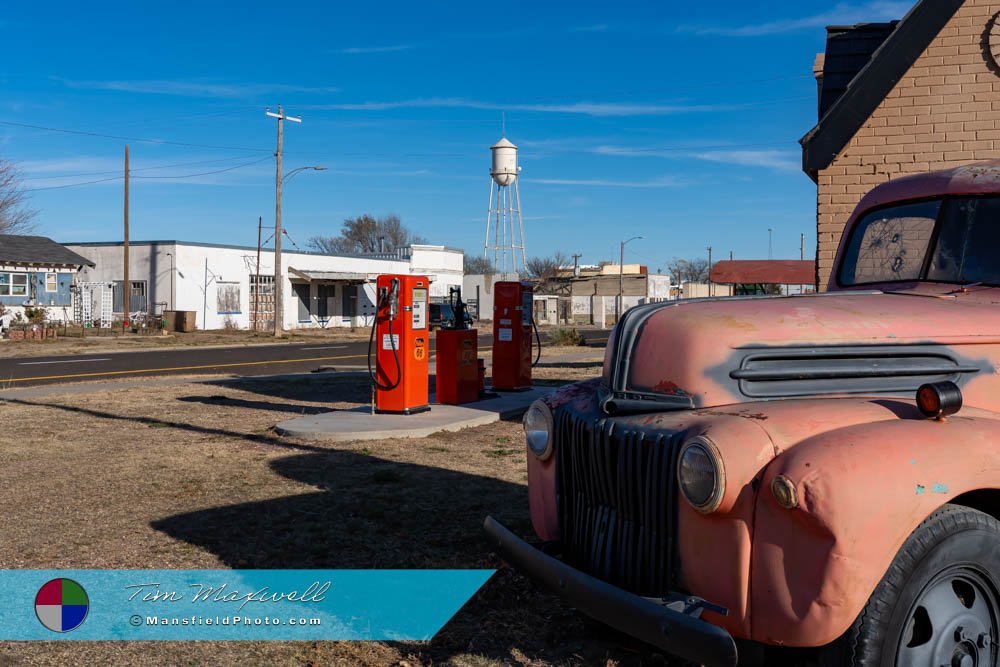Mansfield Photography
McLean, Texas
– The Story of a Texas Crossroad.
McLean, founded 1901 in the Texas Panhandle, began to take shape as the Choctaw, Oklahoma, and Texas Railroad made its way westward. The settlement was named after William P. McLean, a prominent Texas statesman and attorney who served on the state’s Railroad Commission. While McLean never lived in the area, his contributions to the state’s transportation system made him a fitting namesake for a town destined to rely on the movement of goods and people.
Alfred Rowe, an English rancher who had immigrated to the region in the late 19th century, played a vital role in the area’s early development. Rowe owned the R O (Rowe) Ranch near the future townsite and was instrumental in supporting the railroad’s extension, providing land and resources that helped establish the settlement. Tragically, Rowe would later perish aboard the Titanic in 1912, but his impact on the region is still remembered.
The Growth of a Thriving Community
The arrival of the railroad brought immediate growth to the town. By 1909, it had become a bustling center of commerce for surrounding farms and ranches. Businesses sprouted along brick-paved streets, many of which remain intact today, offering a glimpse into the early 20th century. The town’s population grew steadily, bolstered by its strategic location along key transportation routes.
In the 1920s, the advent of Route 66 transformed the community into a major stop for travelers journeying between Chicago and Los Angeles.
Filling stations, motels, and diners lined the route, catering to a new wave of automobile tourists. For decades, the town’s identity was intertwined with the “Mother Road,” a lifeline that brought prosperity and national recognition.
The Rise and Fall Along Route 66
As Route 66 gained prominence, the town’s downtown area continued to flourish. The beautiful brick streets became home to a variety of thriving businesses. Historic buildings, constructed with care and craftsmanship, still stand today, many in remarkably good condition and still in use.
However, the construction of Interstate 40 in the area marked a turning point in the late 70s. Bypassing the town entirely, the new highway diverted traffic and commerce away from Route 66. The once-bustling strip along the famous roadway began to decline, with many businesses closing their doors. The contrast between the vibrant downtown and the quieter former Route 66 area tells the story of a community that has faced significant challenges while holding onto its character and history.
Interesting Facts and Unique Features
The town is home to the Devil’s Rope Museum, a quirky and fascinating institution dedicated to the history of barbed wire. Visitors can explore exhibits on how this humble invention transformed ranching and land management in the American West.
During its heyday, the town’s section of Route 66 was adorned with neon signs and classic roadside architecture. While some of these elements have faded, enthusiasts of Americana can still find remnants of the glory days.
The Present and the Future
Today, this Panhandle town is a place where history and resilience converge. While the effects of Interstate 40’s construction are still evident, the downtown area remains a focal point of community pride.The brick-paved streets, lined with historic structures, exude charm and authenticity. Efforts to preserve and restore these buildings have helped maintain the area’s historic character.
The resurgence of interest in Route 66 has also brought new life to the community. Travelers and historians drawn to the iconic roadway often make stops to explore its unique attractions and learn about its storied past. Festivals, events, and local businesses celebrate the town’s legacy, ensuring that its story continues to be told.
📸 Want to See More Photos of This Town?
A Legacy Worth Celebrating
This small Texas crossroads is more than just a dot on the map. It’s a testament to the enduring spirit of communities shaped by the railroad, Route 66, and the challenges of modernity. From Alfred Rowe’s pioneering contributions to the vibrant downtown streets, the town’s history is a journey through time that reflects both the triumphs and trials of rural America. For those who visit, it offers not just a look back at the past but a reminder of the resilience and adaptability of small towns everywhere.









